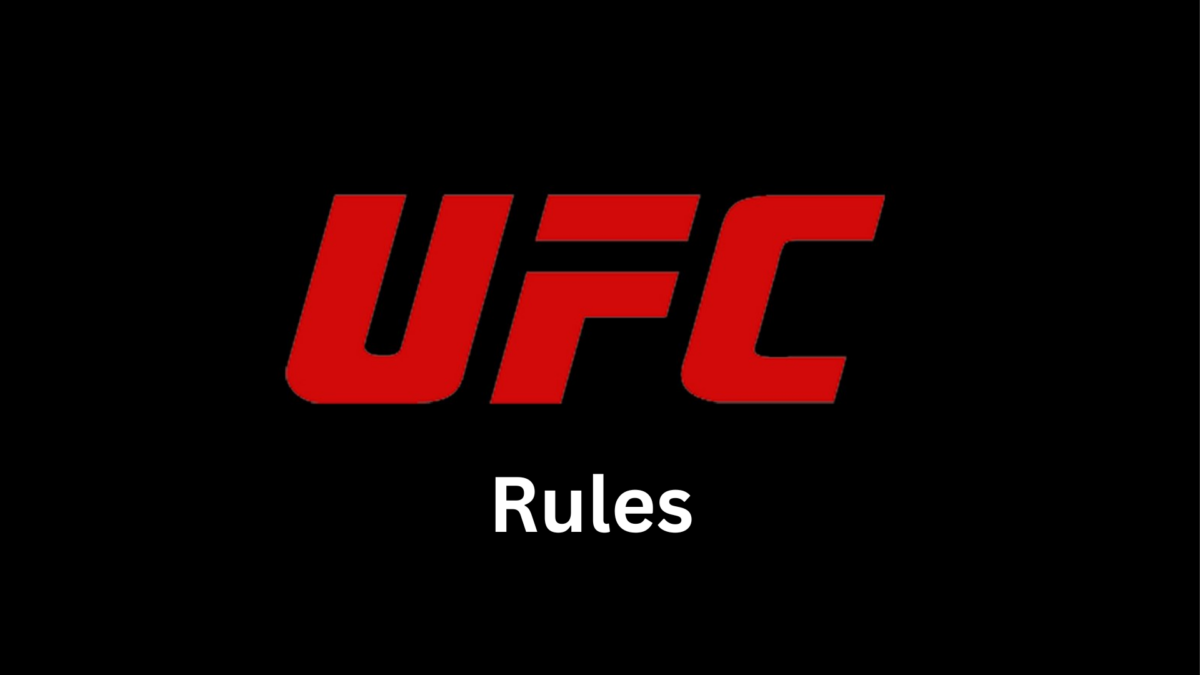Let us explore the rules of UFC and check if is there any difference between the rules of MMA and UFC in this article.

Before jumping into the rules of the UFC (Ultimate Fighting Championship) and the difference between the UFC and MMA (Mixed Martial Arts), let us first have a brief look at the history of these two sports as they started and evolved into what we are witnessing today.
Ultimate Fighting Championship (UFC)
The Ultimate Fighting Championship (UFC) is a promoter of mixed martial arts (MMA), and it is a multi-million dollar organization that conducts fight events. Since it was established in 1993, the UFC has played a pivotal role in popularizing MMA globally.
At first, the UFC was criticized for its lack of rules and perceived brutality, but then the organization underwent significant reforms to enhance safety and gain mainstream acceptance.
Over the years, the UFC has evolved into a structured competition that adheres to rules and regulations and encompasses a wide array of fighting styles, including striking and grappling techniques. The organization has propelled many fighters like Anderson Silva and Conor McGregor into stardom and introduced innovative weight divisions and female competitions.
The UFC’s rise has also contributed to the globalization of MMA and the establishment of MMA as a legitimate sport.
Mixed Martial Arts (MMA)
Mixed Martial Arts (MMA) is a combat sport that combines various fighting techniques from disciplines like boxing, Brazilian jiu-jitsu, wrestling, Muay Thai, and more. The origins of MMA can be traced back to ancient civilizations, but the modern sport gained prominence in the late 20th century. It represents the amalgamation of different martial arts philosophies, encouraging fighters to adapt and employ a versatile skill set.
MMA competitions involve fighters of different backgrounds facing off in a controlled environment. The goal is to achieve victory through submission, knockout, or the judges’ decisions. MMA’s evolution has seen the implementation of rules and weight classes, emphasizing safety while maintaining the excitement of the sport.
So from this, we can understand that MMA is the sport, and the UFC is an organization that conducts and promotes fights involving MMA techniques. So how are the rules differing between the two?
UFC Elements
| UFC Elements | Description |
|---|---|
| Rounds | Vary in length: Max 5 mins/round. Championship: Max 5 rounds. Non-championship main event: Max 5 rounds. Non-main event: Max 3 rounds. Sudden victory possible. One-minute rest between rounds. |
| Cage (“The Octagon”) | Eight-sided enclosure with metal chain-link fence. Diameter: 30 ft. Height: 6 ft. Smaller version: 25 ft. Platform elevated 4 ft. Foam padding, entry-exit gates. Changing mat. |
| Attire & Equipment | Competitors wear approved shorts (no shoes), gloves with padding, mouthguard, protective cups. Tops for females. Attire checked by officials. |
UFC Rules to Win a match
In UFC matches, there are various ways that a fight can come to an end, each carrying its own unique circumstances and outcomes.
One common way is through submission, where a fighter concedes defeat by tapping the mat, expressing verbal surrender, or showing clear signs of pain. This causes the referee to halt the match. In some instances, a technical submission occurs when a fighter loses consciousness or suffers a severe injury while caught in a hold.
Another decisive outcome is a knockout, resulting from a legal strike that renders a fighter unconscious. This dramatic turn of events often signals the end of the match.
A Technical Knockout (TKO) is called by the referee if a fighter is unable to continue due to various factors. This can involve the referee’s intervention, a doctor’s concern for safety, or the fighter’s own corner conceding defeat on their behalf.
In the event of a forfeit, if a fighter either refuses to participate or prematurely ends the fight for reasons other than injury, their opponent is declared the winner.
The judges’ decision method relies on scoring by a panel of judges. This method involves different scenarios:
- Split decision: Two judges score in favour of one fighter, while the third opts for the other.
- Technical decision: Arising from unintentional illegal elements, based on finished and unfinished rounds.
- Draw variations: Can be unanimous, majority, or split based on the judges’ scores.
- Unanimous decision: All three judges declare one fighter as the winner.
- Majority decision: Two judges favour one fighter, while the third declares a draw.
If a fighter intentionally employs an illegal move that results in harm, the opponent secures a victory through disqualification.
A no-contest ruling occurs when a fight is unable to continue due to unintentional illegal factors or both fighters being unable to effectively continue. This ruling can also arise from unsatisfactory or illegal circumstances altering the original course of the fight.
Should a match conclude in a draw, it’s not necessary for the fighters’ total points to be equal. In the case of a unanimous or split draw, each fighter receives an equal number of win judgments. Furthermore, if a title fight ends in a draw, the defending champion retains their title.
Are UFC rules different from MMA rules?
Actually, no, the UFC follows the unified rules of MMA. The Unified Rules of Mixed Martial Arts (MMA) are a set of detailed rules for the regulation of professional mixed martial arts contests that preserve uniformity among different legal systems and regulatory organizations. UFC has consistently embraced heightened regulation of MMA and formally adopted the Unified Rules of MMA in November 2000.
Read More:
JOE ROGAN’S VERDICT: JAKE PAUL VS. NATE DIAZ MMA FIGHT SETS STAGE FOR EPIC REMATCH

